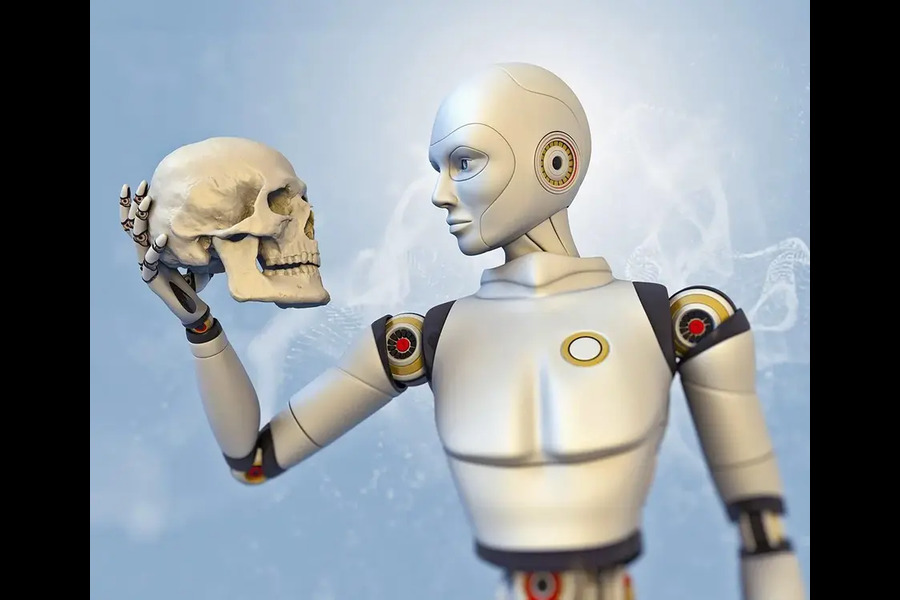AI Is Not All That Green
Without a doubt, artificial intelligence (AI) has completely changed how we work, live, and use technology. Artificial intelligence (AI) has changed industries and increased efficiency in many ways, from predictive algorithms to driverless cars. But one area that is frequently ignored is how AI affects the environment. We’ll look at AI’s less environmentally friendly aspects and how they affect the environment in this blog.
One of the known aspects of the technology of the modern era is Artificial Intelligence which refers to the simulation of human intelligence in machines that are programmed to learn reason and make decisions based on the data. AI has become increasingly popular in in recent times due to advances in technology and growing demand for automation. One example of a popular AI based platform is chatgpt, a computer program that can be used to communicate with humans It processes natural language and provides answers to the questions in a way that if u r talking to a person people nowadays are also using AI to draw imaginary pictures through platforms that use machine learning to generate images based on textual descriptions, moreover it can produce realistic voice from text and much more.
Though Computer science says that trying to get an Artificial Intelligence but God’s creation of the human being is far superior than the computer and there have been many a time competition between human beings and the computer and if you’ve heard of the famous mathematician from India, Shakuntala Devi she had a competition with the fastest computer and they gave an equation which was very long and she defeated the computer with 10 or 20 seconds.
The Human brain is capable of performing complex functions that are beyond the capabilities of even the most advanced machines. AI viewing it as a tool that can be used to improve human life and promote social welfare.
Energy-usage
The significant energy consumption of AI is one of the main issues. AI model training and operation demand a lot of processing power, which is typically supplied by data centers that use a lot of electricity. The process of teaching intricate AI models, like deep learning networks, can, throughout its lifespan, use as much energy as a whole car. The need for AI is increasing along with energy usage, which results in a significant carbon footprint.
Electronic Waste
One phenomenon that results from AI technology’s rapid growth is called “AI obsolescence.” Older AI systems quickly become outdated due to the rapid evolution of AI hardware and software, which adds to the growing amount of electronic trash, or e-waste. Because old AI components contain harmful elements, disposing of them contributes to the rising e-waste problem and poses health and environmental risks.
Data Centre Air Conditioning
In order to keep AI algorithms from overheating, data centers that run them need sophisticated cooling systems. Due to their high water and electricity consumption, these cooling systems have an adverse effect on nearby ecosystems and add to the overall stress on the environment.
Bias in Algorithms and Inequality
The objectivity of AI algorithms is dependent on the quality of the training data. AI systems have the potential to reinforce and magnify current societal disparities if data bias is not properly taken into account. This continuation results in the wasteful use of resources and may have long-term detrimental impacts on the environment and underprivileged groups.
Environmental Responsibilities in the Development of AI
Even if artificial intelligence has a big influence on the environment, there are things that may be done to lessen it.
Effective Algorithms
Creating AI algorithms that are more energy-efficient can drastically cut energy use without sacrificing performance.
Hardware Optimization
The energy footprint of AI systems can be decreased with the help of developments in hardware design, such as the creation of low-power AI chips.
Renewable Energy
The carbon footprint of artificial intelligence (AI) can be reduced by using renewable energy sources to power data centers and AI infrastructure.
E-waste Management
Reducing the environmental impact of AI obsolescence can be achieved by implementing appropriate e-waste management practices, such as recycling and reusing AI hardware.
Ethical AI Development
Giving ethical issues a priority while developing AI systems will help to ensure that they reduce prejudice and inequality and benefit society as a whole.
Even though artificial intelligence (AI) has many benefits, it is important to understand and manage its environmental impact. We may work toward this goal by recognizing the difficulties posed by AI and using sustainable development and deployment approaches. AI has the potential to be a effective apparatus for natural arrangements, its natural affect shouldn’t be overlooked. Tending to these challenges is pivotal to guarantee AI improvement is really economical.
Featured Image:
https://www.forbes.com/sites/robertadams/2016/03/25/is-artificial-intelligence-dangerous/
Source:

